Munich’s complex and tumultuous history under the Nazi regime is laid bare through this captivating guided walking tour. Participants will uncover the formative locations and events that fueled the party’s rise to power, from the infamous Beer Hall Putsch to its impact on the city’s art and culture. The tour also shines a light on the brave German Resistance movement, offering a nuanced understanding of this pivotal chapter. Whether you’re a history enthusiast or simply seeking to deepen your knowledge, this immersive experience promises to challenge perceptions and leave you eager to explore further.
Key Points
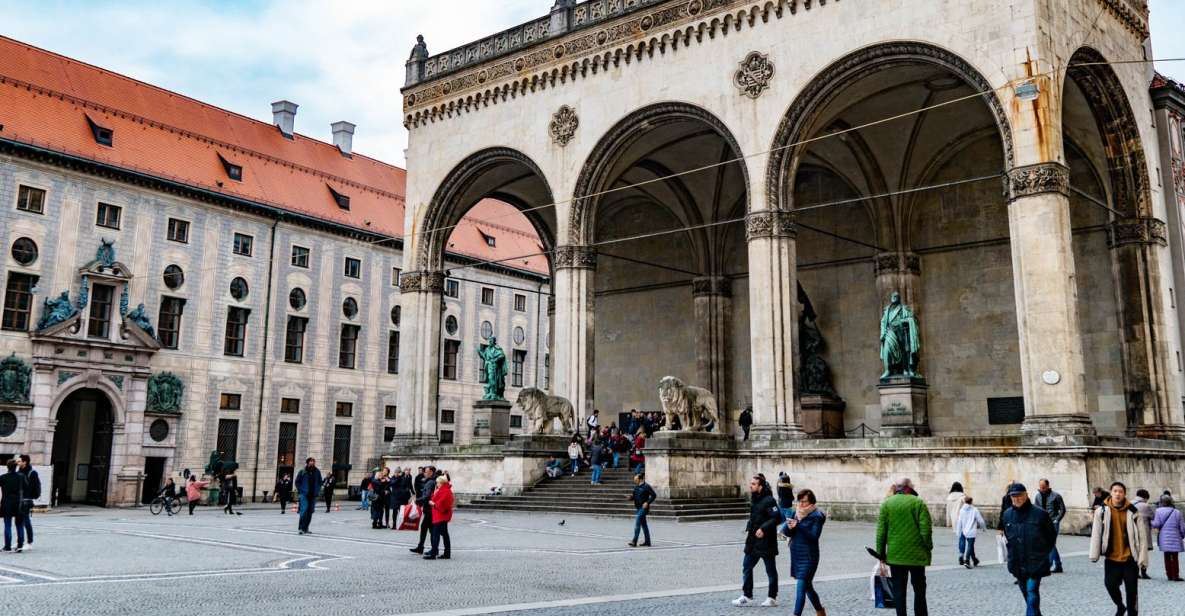
- This guided tour explores the political origins of the Nazi movement in Munich, the birthplace of the party.
- The tour visits historical sites like Odeonsplatz, Hofbräuhaus, and Haus der Kunst, showcasing the Nazi regime’s influence on art and culture.
- Participants will learn about the German Resistance movement and the bravery of those who opposed the Nazi tyranny.
- The tour highlights the Beer Hall Putsch, a crucial turning point in the Nazi party’s rise to power.
- The tour provides a deeper understanding of how the Nazi party established its foothold in Munich before expanding across Germany.
Overview of the Tour
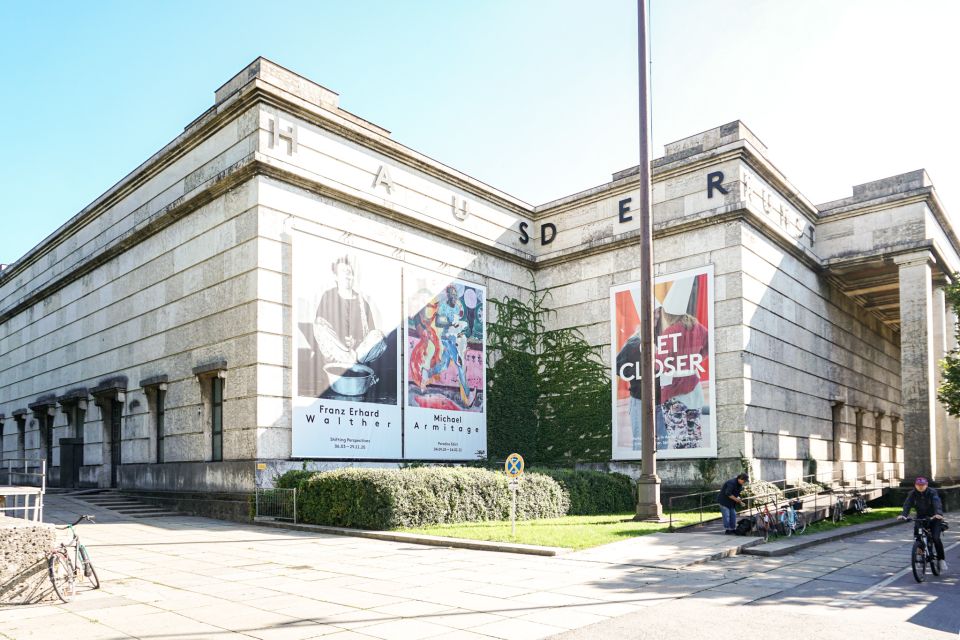
This walking tour provides an immersive experience to trace the political origins of Adolf Hitler and the Nazi movement in Munich.
It’s a 2.5-hour guided tour that explores the historical locations during the Third Reich. Participants will discover the German Resistance movement and the beginnings of the Nazi party in the city.
The tour highlights key events like the Beer Hall Putsch. It starts at Marienplatz and visits sites like Odeonsplatz, Hofbräuhaus, Haus der Kunst, and Führerbau.
Along the way, you will learn about the Nazi regime’s influence on art and the banning of ‘degenerate art’.
The guided tour is suitable for ages 12 and above, with free cancellation up to 24 hours in advance.
Tracing the Nazi Movement
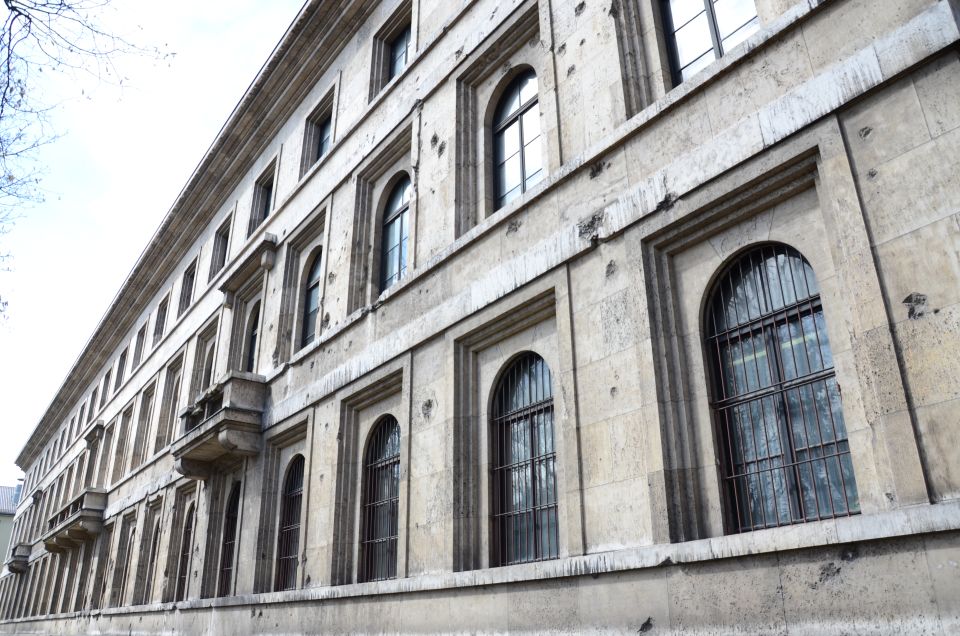
The tour begins by exploring the origins of the Nazi movement in Munich, where Adolf Hitler and his followers first gained prominence in the early 1920s.
Guests will visit key locations that witnessed the rise of the Nazi party, including Odeonsplatz, where the infamous Beer Hall Putsch took place in 1923.
At the Hofbräuhaus, they’ll learn about the formative meetings and speeches that rallied early Nazi supporters.
The tour also delves into the influence of the Nazi regime on art, exploring the Haus der Kunst and the concept of ‘degenerate art‘.
Throughout the journey, visitors will gain a deeper understanding of how the Nazi party established its foothold in Munich before expanding its reach across Germany.
Historical Locations of the Third Reich
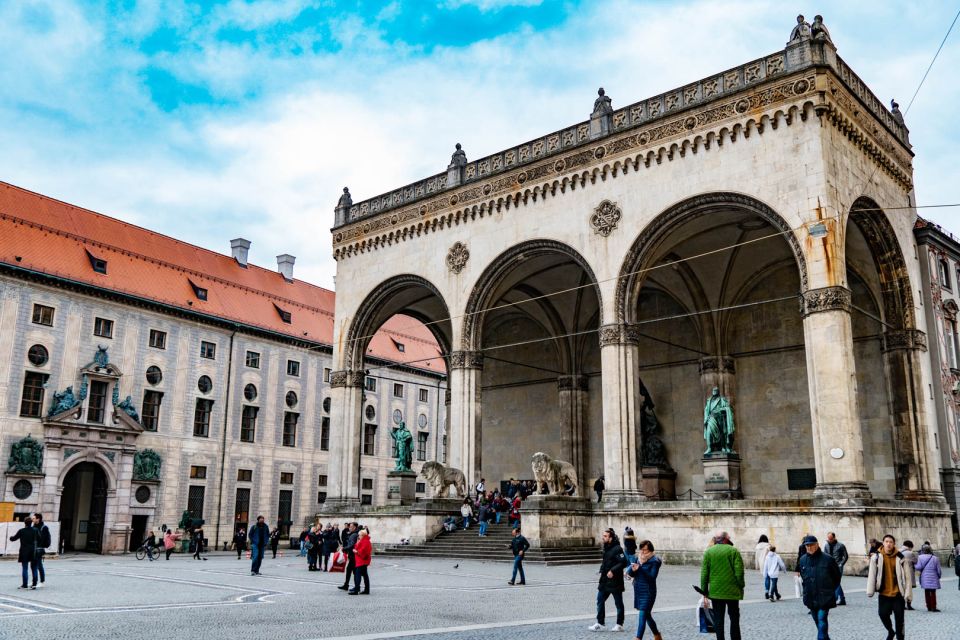
During the tour, you will visit several historical locations that were integral to the Third Reich’s rise and operations in Munich.
These include Odeonsplatz, where the infamous Beer Hall Putsch took place in 1923, and the Hofbräuhaus, a beer hall where early Nazi supporters often gathered and plotted.
The tour will also explore the Haus der Kunst, a neoclassical art museum that became a symbol of Nazi cultural policies, and the Führerbau, the former headquarters of the Nazi party.
The tour provides a unique opportunity to understand the spatial and architectural dimensions of the Third Reich’s presence in Munich, the cradle of the Nazi movement.
German Resistance Movement
Among the lesser-known aspects of Munich’s history during the Third Reich is the German Resistance movement, which bravely opposed the Nazi regime from within.
The tour highlights the stories of protagonists like Georg Elser, who attempted to assassinate Hitler, and the students of the White Rose group, who distributed anti-Nazi pamphlets.
Though their efforts were often met with brutal crackdowns, these courageous individuals risked everything to stand up against the tyranny of the Third Reich.
The tour explores the origins and activities of the German Resistance, shedding light on this important but lesser-known chapter of Munich’s past. Visitors will gain a deeper appreciation for the bravery and sacrifice of those who dared to defy the Nazi regime.
Beginnings of the Nazi Party
Munich served as the birthplace of the Nazi party, which rose to prominence in the aftermath of World War I. Adolf Hitler and his associates laid the foundations for their radical nationalist movement in the city, using it as a base to disseminate their extremist ideology and recruit new members.
From the party’s humble beginnings in small beer halls, the Nazis would eventually seize control of the German government and unleash their campaign of terror across Europe.
The early days of the Nazi party were marked by three key factors:
- Exploiting economic and political instability in post-war Germany
- Scapegoating minority groups, particularly Jews, for the country’s problems
- Ruthlessly suppressing any opposition through violence and intimidation
The Beer Hall Putsch
In 1923, Hitler and other Nazi leaders orchestrated a failed coup attempt known as the Beer Hall Putsch, seeking to seize power in Bavaria and march on Berlin. The plan was to rally 3,000 Nazi supporters and storm government buildings, but it quickly unraveled. Clashes with police resulted in 16 Nazis and 3 officers killed. Hitler was arrested and sentenced to 5 years in prison, though he only served 9 months. The failed coup was a setback, but it brought the Nazis national attention and allowed Hitler to use the trial as a platform to promote his ideas. This event marked a crucial turning point in the party’s rise to power.
| Outcome of the Beer Hall Putsch |
|---|
| 16 Nazis killed |
| 3 police officers killed |
| Hitler sentenced to 5 years |
| Hitler served 9 months |
| Brought national attention |
Impact on Art and Culture
The Nazi regime had a profound impact on art and culture in Germany during the Third Reich. They sought to promote ‘Aryan’ artistic ideals while banning and denouncing ‘degenerate’ art forms that didn’t align with their nationalist and racist ideology.
The Nazi party’s crackdown on modern, avant-garde, and expressionist art was exemplified by the infamous ‘Degenerate Art’ exhibition in 1937, which displayed works deemed unfit for the ‘Aryan’ ideal. This censorship and control of the arts had a chilling effect, forcing many artists into exile or persecution.
The Third Reich’s impact on culture was felt in architecture, music, and literature as well, as the Nazis ruthlessly promoted their nationalist agenda through the arts.
Important Tour Information
This walking tour is suitable for individuals aged 12 and above. Guests can cancel their reservation free of charge up to 24 hours in advance. Participants are encouraged to reserve their spots now and pay later.
The tour duration is approximately 2.5 hours and costs from $18.60 per person.
During the guided walking tour, visitors will explore historical landmarks in Munich and learn about the political origins of Adolf Hitler and the Nazi movement. The tour covers locations such as Marienplatz, Odeonsplatz, Hofbräuhaus, Haus der Kunst, and Führerbau.
Participants will also discover the German Resistance movement and the influence of the Nazi regime on art and culture.
Frequently Asked Questions
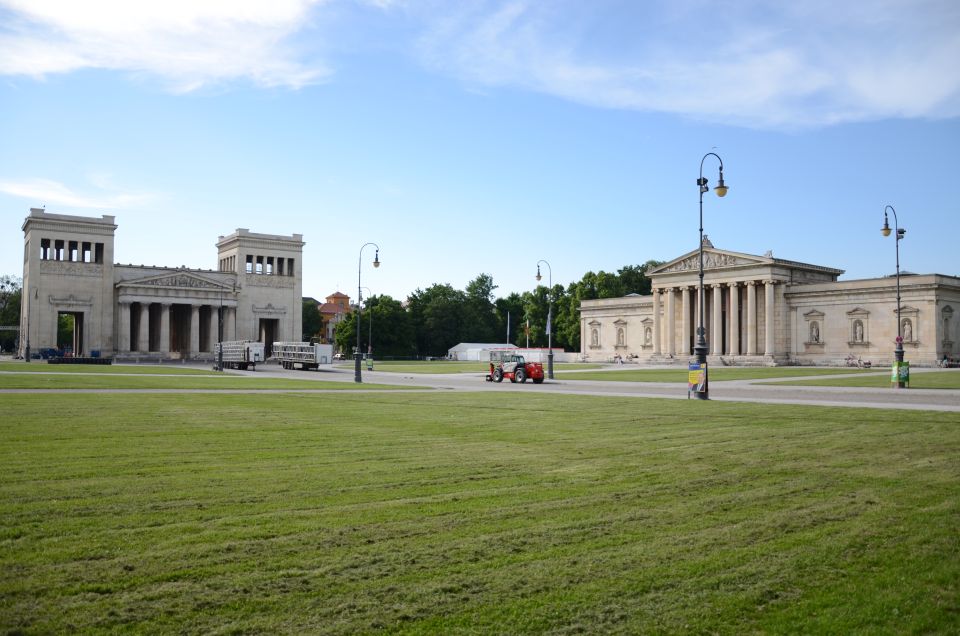
Is There a Restroom Break During the Tour?
There is typically a restroom break provided during longer guided tours. However, the details of the restroom availability and schedule for this specific tour are not explicitly stated in the information provided. Visitors should inquire about restroom breaks when booking the tour.
Can I Take Photographs During the Tour?
Yes, you can usually take photographs during the tour. Most guides allow it, as long as it doesn’t disrupt the group or impede the flow of the tour. Just be mindful and respectful of the historical sites and other participants.
Is the Tour Wheelchair Accessible?
The tour is not explicitly advertised as wheelchair accessible. Visitors using wheelchairs or with mobility issues should inquire about accessibility accommodations when booking the tour. The walking route and terrain may present challenges for those with limited mobility.
Do I Need to Bring My Own Headphones?
No, you don’t need to bring your own headphones. The tour typically provides audio devices for participants to hear the guide’s commentary clearly during the walking tour.
Can I Purchase Souvenirs at the End of the Tour?
The tour does not specifically include time for purchasing souvenirs. However, participants can likely find opportunities to buy memorabilia or gifts related to the tour’s historical content at their own discretion after the guided portion concludes.
Recap
This guided tour provides an in-depth exploration of the rise of Adolf Hitler and the Nazi party in Munich.
It traces the party’s early foothold, the infamous Beer Hall Putsch, and the regime’s impact on art and culture.
The tour also highlights the German Resistance movement‘s brave defiance against the Third Reich’s tyranny, offering a deeper understanding of this pivotal chapter in Munich’s history.






